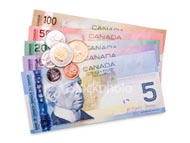Detailed chart analysis of past trading action
Identified where reversion and break-out trading occurred
The image below is the chart of Canadian Dollar futures contract ( CME Ticker Symbol: 6C ).
It is a multi-days chart showing Composite Time Price Opportunity (TPO) Profile on the left side
and Composite Volume Profile on the right side.
This is an unique charting technique and requires some explanation on how to read the chart.
This chart shows more information than the conventional graphical chart. Reading this chart will
stimulate your whole brain. The left hemisphere of your brain which is responsible for logical,
rational and analytical functions will be engaged by the numerical data portion of the chart. The
right hemisphere of your brain which is responsible for the intuitive and subjective functions will be
engaged by the graphical portion of the chart.
This gives you an advantage of engaging your whole mind when it comes to trading instead of using
just a section of it.
Showing
Time Price Opportunity (TPO)
Profile side-by-side to Volume Profile gives you a quick synopsis of
- which price levels received the most trading volume
- at what time during the trading session had it traded there
- how many times it had backfilled to those price levels
- where reversion trades worked for traders fading the move as price traded back and forth to form a cluster node
- see where and when break-out trades occurred as price spends very little time trading there
(Click on image below to bring up thumbnail and enlarge the chart.)

Legends:
- VAH = Value Area High
- VAL = Value Area Low
- POC = Point of Control (i.e. where most of the trading volume had occurred)
- TPO Count = Where trading has spent the most time
- VWAP = Volume-Weighted Average Price
- BOO = Break-out Octet. Minimum stop loss risk on false break-outs
- BDO = Break-down Octet. Minimum stop loss risk on false break-downs
- Spot = Spot FX price quotation on USD/CAD currency pair.
- Each TPO letter represents half hour intervals
- TPO { abcdefghijklmnop } are the Asian Session
- TPO { qrst } are when both Asian and European Traders are awake, alert and online
- TPO { uvwx } are the remaining European Session
- TPO { yzVWXYZABCDE } are when both European and American Traders are awake, alert and online
- TPO { FGHIJKLMNOPQ } are the remaining American Session
Country Profile and Fundamental Analysis
Canada is a federation composed of ten provinces and three territories. The ten provinces are Alberta,
British Columbia, Manitoba, New Brunswick, Newfoundland and Labrador, Nova Scotia, Ontario, Prince Edward Island,
Quebec, and Saskatchewan. The three territories are Northwest Territories, Nunavut, and Yukon.
The national languages of Canada are English and French.

Canada's major trading partner is the USA. The United States accounts for 80% of Canada's exports.
United Kingdom, Japan, China, Mexico, Germany, Netherlands, South Korea, Belgium, and France account for the
remaining 20% of Canada's export market.
The city of Toronto is the hub of Canada's financial industry. Toronto is the capital of province Ontario.
Toronto is in the Eastern Daylight Time Zone which is Greenwich Mean Time minus 4 hours.

|
